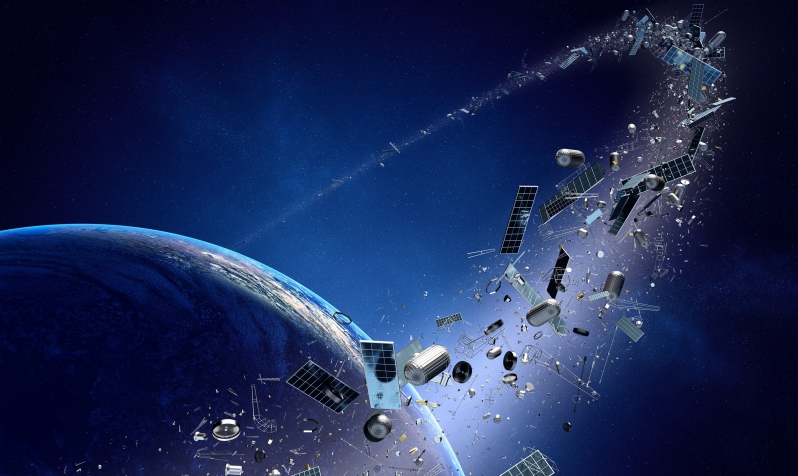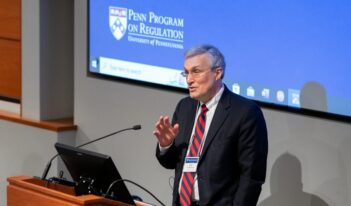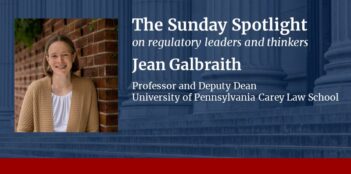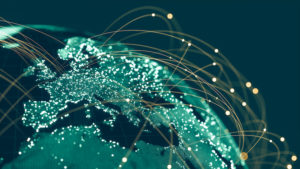
Scholar evaluates options to strengthen international space debris regulations.
Both Jeff Bezos and Elon Musk have embarked on projects to launch tens of thousands of satellites into space to provide high speed broadband internet around the world. But satellites can break down and collide. If and when they do, the satellites risk producing a cascade of collisions that could ruin thousands of other satellites and even block access to space.
To prevent this disastrous chain reaction from occurring, international rules about space debris must be strengthened, argues Paul B. Larsen in an article in the Journal of Air Law and Commerce.
The United Nations Committee for the Peaceful Uses of Outer Space defines space debris as all non-functional human-made objects that orbit the earth. This definition includes everything from defunct satellites to broken parts.
Collisions between satellites and this debris can create significant amounts of additional debris. A satellite collision in 2009 generated over 2,000 pieces of debris. Even tiny pieces of space debris can cause damage during collisions because they travel at extreme speeds. Because of this risk, the U.S. Department of Defense tracks 27,000 pieces of debris currently in orbit. And the International Space Station has needed to change orbit at least 25 times to avoid colliding with debris.
Although many communications satellites orbit far from earth, Bezos and Musk will operate their satellites much closer, in a range called low earth orbit. Low earth orbit offers attractive advantages such as fast signals that rival the speed of fiber-optic cables. But real estate for orbiting satellites is finite. As more satellites get added to low earth orbit, collisions in that range become increasingly likely.
Larsen points to some existing guidelines that provide a touchpoint for international coordination. The Inter-Agency Space Debris Coordination Committee, composed of space-related agencies from 13 countries, proposed a list of space debris mitigation guidelines in 2002. Among other things, these guidelines aimed to limit the addition of new debris during normal satellite operations and breakdowns.
But Larsen regards both the committee and its guidelines as inadequate in the face of increasing volumes of space debris. Larsen notes that, even though the mitigation guidelines mark a comprehensive milestone, they are outdated, voluntary, and lack the regulatory teeth needed to affect necessary change. Also, the committee itself is a small body without any authority to enforce its own guidelines.
Customary international law does not offer strong enough guidance, according to Larsen and other scholars. Current international custom holds countries responsible for the damages created by their own space objects. But nondescript pieces of space debris cannot easily be attributed to any one country, according to Larsen.
Larsen argues that international regulation needs to change to promote the removal of space debris already in orbit. Currently, regulatory uncertainty over who has property rights to pieces of debris discourages countries from extracting them.
Changing debris ownership rules could facilitate removal, suggests Larsen. He recommends that countries form an international agreement to waive their sovereign rights to unidentified space debris. Under this agreement, countries and even non-governmental actors could begin to remove space debris without fear of legal repercussions.
As existing debris is removed, new debris will inevitably be added. The potential for growing levels of debris necessitates the creation of an international agency that operates with greater efficiency and has more enforcement power than the current inter-agency committee, argues Larsen.
Larsen suggests that the new agency focus on making its regulatory decisions based strictly on technical grounds instead of national security or other international political considerations. Larsen posits that this technical framing would allow an agency to create rules without getting mired in politically charged negotiations.
But creating an entirely new regulatory framework would be costly and take time. Larsen worries that countries will not find the motivation to create new international rules on space debris unless prompted by a catastrophic collision.
Countries can create rules with binding authority by elevating the agency’s rules to international treaty status. Once a country signs onto a treaty, international law demands compliance because countries can enforce treaty provisions through diplomatic means as well as in international tribunals.
But some countries may adopt new treaty obligations and guidelines more slowly than others. If updated guidelines bind some countries but not others, the regulatory landscape could become uneven.
A phenomenon called the flag of convenience poses another challenge to effective regulation of space debris, argues Larsen. Potential capital flows give countries an incentive to avoid agreeing to international obligations to maintain a more relaxed regulatory regime, which could attract industrial investment. Private satellite companies may simply move their operations to a country that has not adopted the treaty to avoid the impact of treaty obligations.
Although a full-blown chain of collisions has not yet happened in low earth orbit, Larsen predicts that large-scale collisions will occur. The ultimate decision to regulate internationally is left up to state actors, but collisions affect the entire world. Larsen urges countries to adopt a stronger regulatory framework on space debris while time remains.



